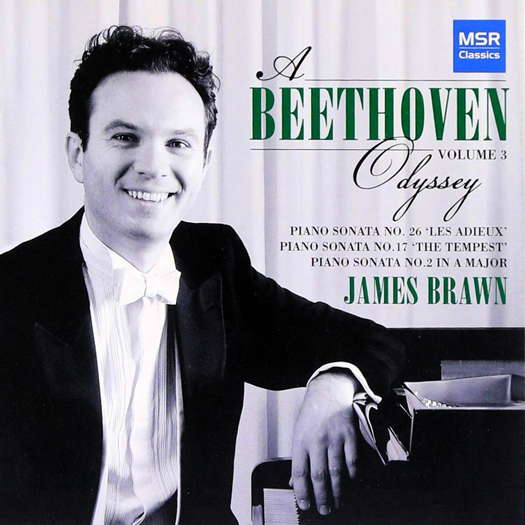ARTICLES BEING VIEWED NOW:
- Régine Crespin
- Hector Berlioz
- Ruth Railton
- Marián Varga
- Profile. A Very Positive Conductor - Paul Bodine talks to Los Angeles Opera's Music Director Designate, Domingo Hindoyan
Meditating on Violence
JEFFREY NEIL's perspective on the late Kaija Saariaho's opera 'Innocence'
One of the many things to set Innocence apart from other operas is that it portrays a massacre. In visual art, this is not an uncommon subject: think of the many paintings of the biblical Massacre of the Innocents or Goya's war series, to name a few. But in the world of musical representation, and specifically in opera, murder is generally limited to a crime of passion or a politically-motivated homicide or two. Opera librettists have heeded Aristotle and kept major violence offstage.
The late Finnish composer Kaija Saariaho took up this seemingly unrepresentable theme.
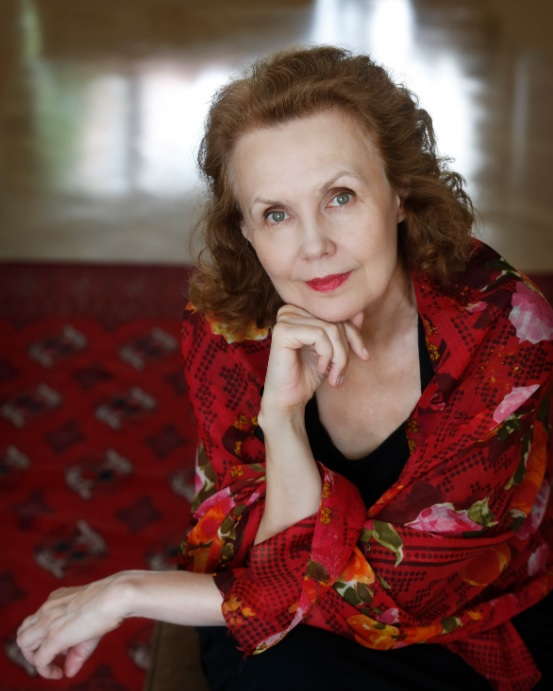
Kaija Saariaho (1952-2023)
When she contemplated writing an opera of great social implications, she chose a mass shooting at an international school. It's no small irony that the setting was not the United States, where slaughters of the innocent are everyday, but safe and peaceful Finland. This setting may have enabled American audiences to be less defensive and more receptive when the opera came to San Francisco, the first American city to experience Innocence.
By staging an opera about a mass shooting, Saariaho entered uncharted territory, both in terms of how to dramatize such an event and how to compose music that communicates the initial violence and the emotional ripple effects over time. To do so, the score and the libretto needed to obey the structure and rules of trauma. Innocence largely succeeds, although it didn't impress me as much as it did virtually every critic who has reviewed it since its premiere in Aix-en-Provence exactly three years ago, many declaring it a 'masterpiece'.
The opera dramatizes the lives and afterlives of thirteen characters, some who exist in the present as broken versions of their former selves, and others as spectral presences. They sing in almost as many languages: Czech, English, French, German, Greek, Spanish, Swedish and, of course, Finnish. On a theatrical level, the different languages serve to underscore the isolation of these characters, as they spin around in their own prisons, unable to go out or work, remaining in the past, or obsessively ruminating on what they could have done differently.
According to librettist Aleksi Barrière, Saariaho decided to 'develop a melodic and harmonic language for each character, from which the rest of the opera's music grew'. Each singer does have a distinctive voice and style, with Student No 1, Marketa, for example, singing in a haunting Finnish folk style. In this sense, too, the set, a rotating cube of rooms with upper and lower decks, functions as a visual counterpart to the musical and linguistic polyphony - a kind of contemporary Tower of Babel in which the past and present coexist.
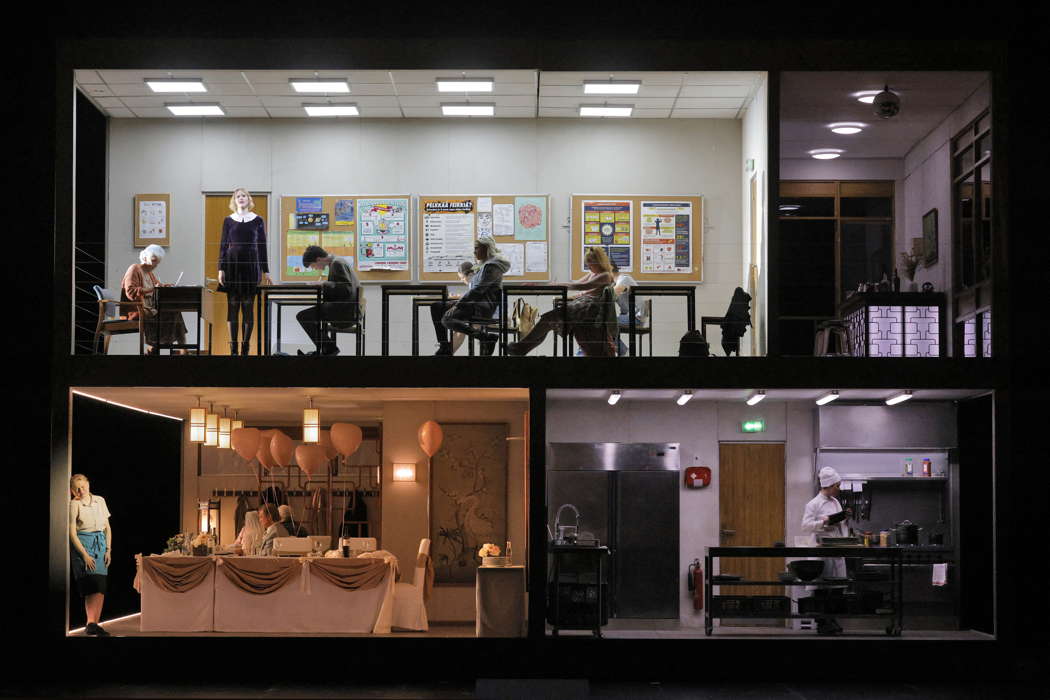
A scene from Innocence by Kaija Saariaho, Sofi Oksanen and Aleksi Barrière at San Francisco Opera. Photo © 2024 Cory Weaver
Amazingly, the scenes portrayed from ten years ago and the ones meant to be now are enacted almost at the same time, but still make sense; and, in doing so, the opera stages its greatest victory, which is providing a set and dramatic structure that also emulate the way in which each character's trauma moves from the past into the present. It is difficult to differentiate what happened when, who is alive and who is dead.
We witness bloody scenes of terror from the past, although we never see the student shooter or the gun shots; rather, people are running away, sometimes in slow motion; fear radiates out of many moving points starting with a suspicious suitcase in the beginning, the blood on the walls, and the omnipresent torture of Iris's mocking voice; she bears the vocal aura of the killer himself, and I kept imagining she was he. Soprano Julie Hega, a talented young singer and actress, is like a manifestation of free-floating pain, gleeful and cruel as she revels in the deaths of her peers. The reason for this I'll leave unsaid not to spoil one of the key mysteries of the opera, but it does help to explain the 'why' of the shooting, and its connection to systemic cruelty: nobody is in fact innocent, and there is more than one 'monster' - a term that gets bandied about - besides the shooter.
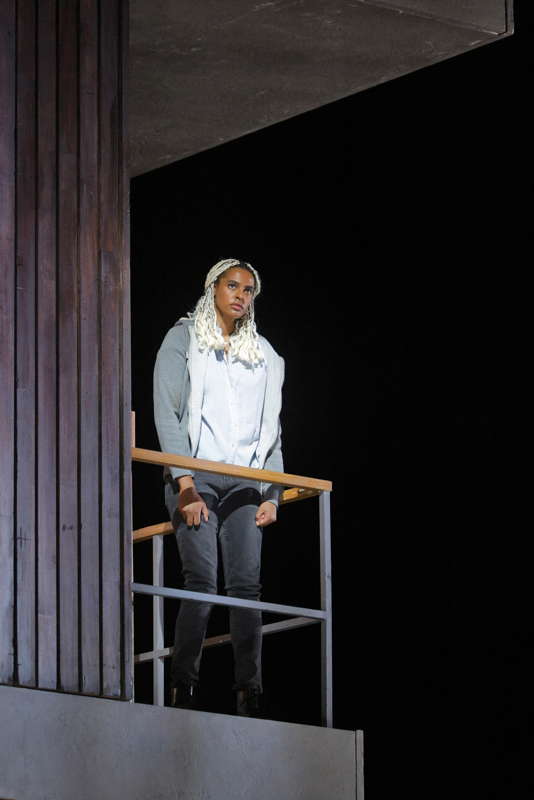
Julie Hega as Student No 3 (Iris)
in Innocence at San Francisco Opera.
Photo © 2024 Cory Weaver
Musically, the opera opens up with the distinct sound of each instrument or section in the orchestra with percussion playing a defining part; it conjured up an image for me of a kaleidoscope filled with poltergeists. The instructions in the score should give some idea of the manipulation of the instruments for a haunting effect: sometimes blow air through wind instruments but 'do not produce the normal tone'; for strings, the glassy, metallic sound of 'sul ponticello' and the soft ethereal sound of 'sul tasto'; on the harp a 'circular glissando'. The music alternates between disturbing and ethereal, reaching an urgent pitch at the end of Act I, followed by a calmer beginning to Act II. This is emblematic of the whole opera because musical shifts mark the movement from one act to another, even when the dramatic action itself does not make it apparent that we are now in a new act. The opera structurally reproduces trauma, which resists distinct 'acts'.
Raised above the other stories is the wedding of Tuomas, the Finnish bridegroom of Stela, an immigrant who does not know she is marrying the brother of a mass murderer. There is a kind of reckoning that feels more like a haunting: a waitress for the wedding banquet falls ill and is replaced by Tereza, who is the mother of one of the students killed by the bridegroom's brother. However contrived it may seem, this is not just a plot device, but structurally dramatizes what Freud calls 'the return of the repressed', something that Freud acknowledges is active in the world outside the mind, like his patient who had five husbands die on her. When Tuomas learns that a furious and bereaved mother is about to expose him to his bride, he exclaims, 'I can't possibly have such bad luck at my wedding'. It is not luck, however, but the nature of the irrepressible.
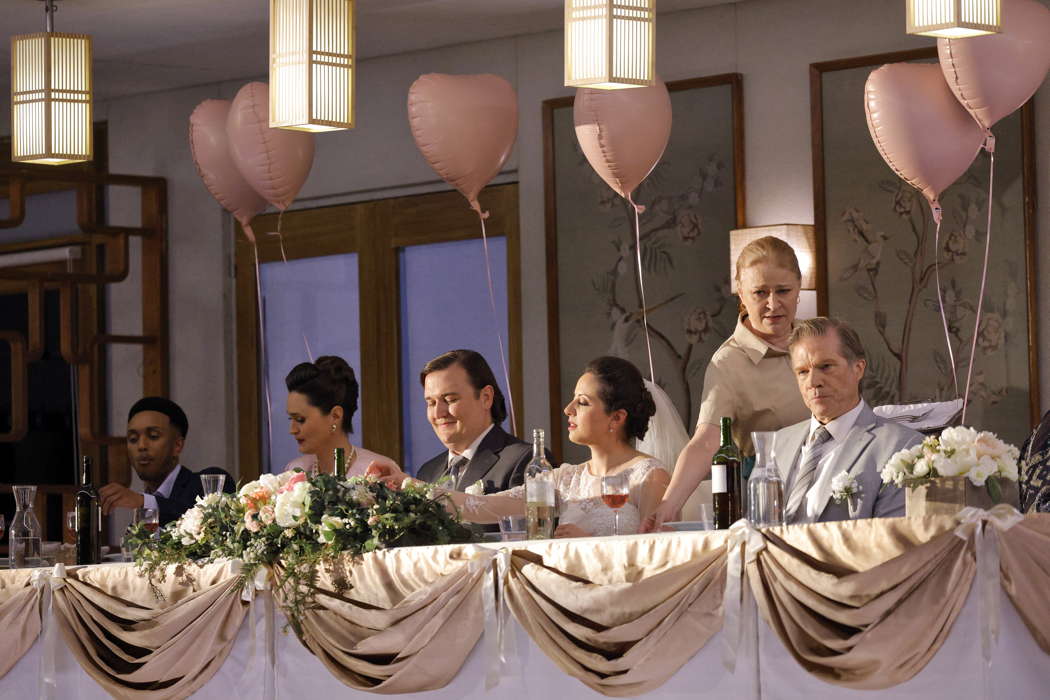
From right to left: Rod Gilfry as the Father-in-Law (Henrik), Ruxandra Donose as the Waitress (Tereza), Lilian Farahani as the Bride (Stela), Miles Mykkanen as the Bridegroom (Tuomas) and Claire de Sévigné as the Mother-in-Law (Patricia) in Innocence by Kaija Saariaho, Sofi Oksanen and Aleksi Barrière at San Francisco Opera. Photo © 2024 Cory Weaver
The main story is driven by traditional 'anagnorisis', or recognition. This is the moment, for example, when Oedipus realizes he has killed his father and married his mother. That hallmark of tragedy is present here when the bridegroom's family members one-by-one come to recognize who the unwelcome visitor from the past is, and later, the bride and the entire family have a new terrible realization about the bridegroom's role in the school shooting. I love that one of the most potent scenes of 'anagnorisis' occurs in a fluorescent-lit pantry when Tereza wheels in a wedding cake. Some of the most powerful music and singing takes place in this purgatorial in-between space where the music of the angelic and the doomed take shape and battle. Violence is never put to rest, as when the bridegroom lashes out, 'Why don't you kill yourself?' In actuality, this statement is directed at his brother, who has just gotten out of prison. But the violence feels as if it were directed at the waitress, the unwanted reminder from the past, who repeatedly sings of her resentment that the family has moved on and seems to be finding happiness.
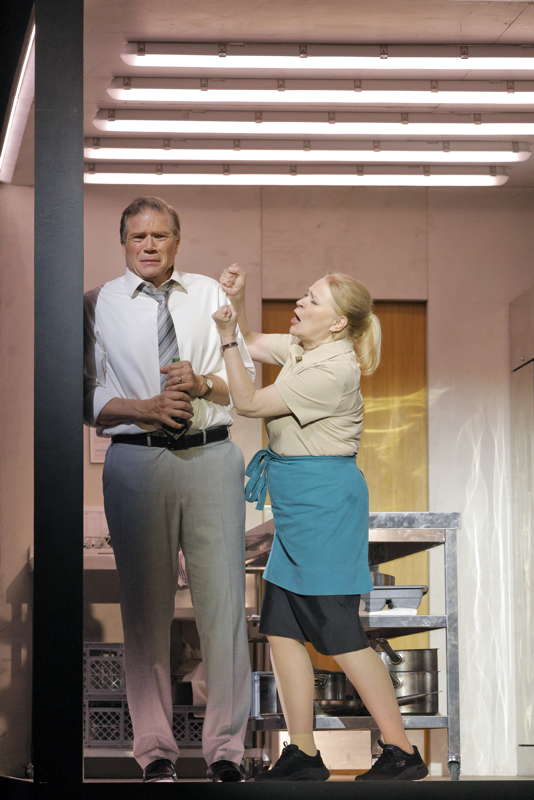
Rod Gilfry as the Father-in-Law (Henrik) and
Ruxandra Donose as the Waitress (Tereza)
in Innocence at San Francisco Opera.
Photo © 2024 Cory Weaver
The drama of this opera at times comes off like a melodramatic montage: there are clichéd lines, spoken, screamed or whispered, rather than sung. The actors articulate a list of textbook complaints of victims of such horrors without making them feel particular to a unique character. Particularly hollow are some of the student characters.
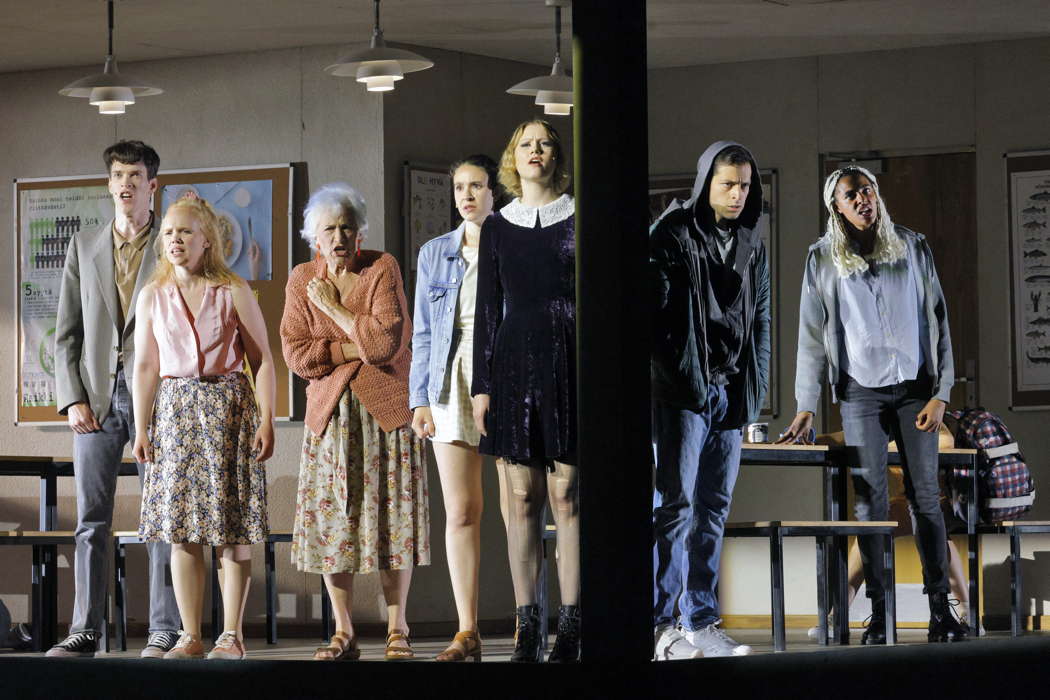
From left to right: Rowan Kievits as Student No 4 (Anton), Beate Mordal as Student No 2 (Lilly), Lucy Shelton as the Teacher, Marina Dumont as Student No 6 (Alexia), Vilma Jää as Student No 1 (Markéta), Camilo Delgado Díaz as Student No 5 (Jerónimo) and Julie Hega as Student No 3 (Iris) in Innocence by Kaija Saariaho, Sofi Oksanen and Aleksi Barrière at San Francisco Opera.
Photo © 2024 Cory Weaver
In contrast, the teacher, the priest, and the family of the shooter are more realized; but even they deliver lines that sometimes sound generic and contrived. One of the more interesting elements, the different languages the vocalists sing or speak in, might also feel to some like a gimmick meant to conceal a weak libretto.
Musically, I loved the rare addition of piano, which has its own score. Marketa, Tereza's dead daughter, sings her folkloric music in an angelic, haunting voice; Vilma Jää, who plays her, is particularly strong. It was, however, when I was enjoying her voice envelop me that I realized the singers were miked, which was shocking for an opera.
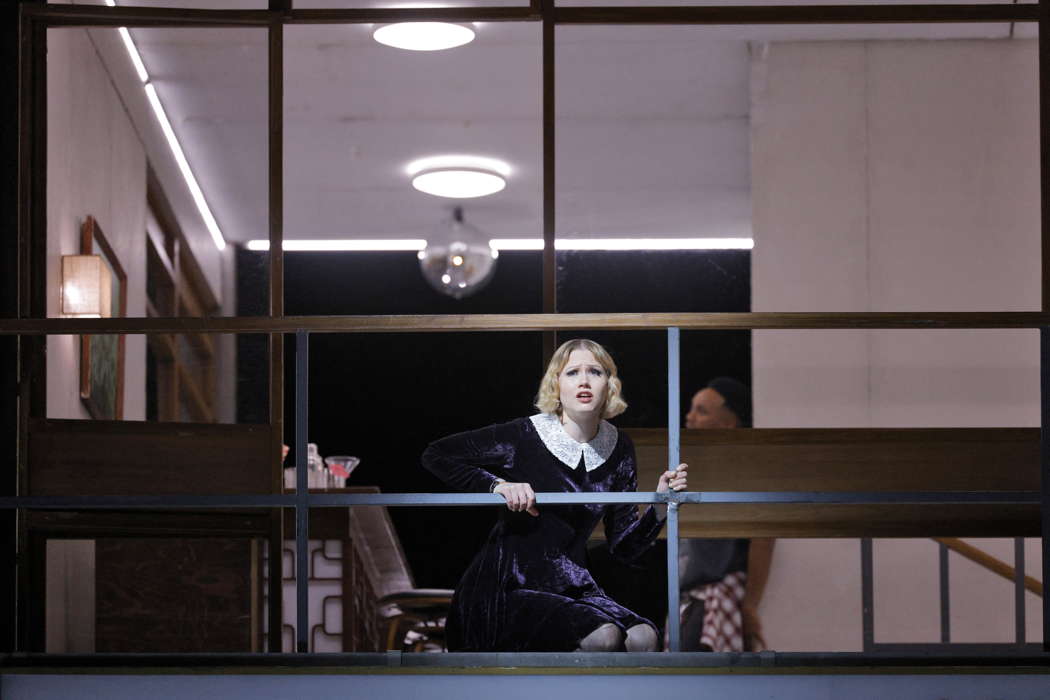
Vilma Jää as Student No 1 (Markéta) in Innocence by Kaija Saariaho, Sofi Oksanen and Aleksi Barrière at San Francisco Opera. Photo © 2024 Cory Weaver
As tenor Miles Mykkanen, who plays Tuomas, descends deeper into his own turmoil, despair and hatred, his arias, paradoxically, become increasingly piercing and beautiful. Bass Kristinn Sigmundsson, as the priest who has lost all conviction, has a profound resonance at both ends of his range. Claire de Sévigné, the soprano mother of the killer, is convincing as a tortured mother, equal parts repellant for how well she inhabits her bourgeois social status and for how she seems to have abandoned her motherly instinct altogether. There were no weak links in the cast, but these were the stand-outs for me.
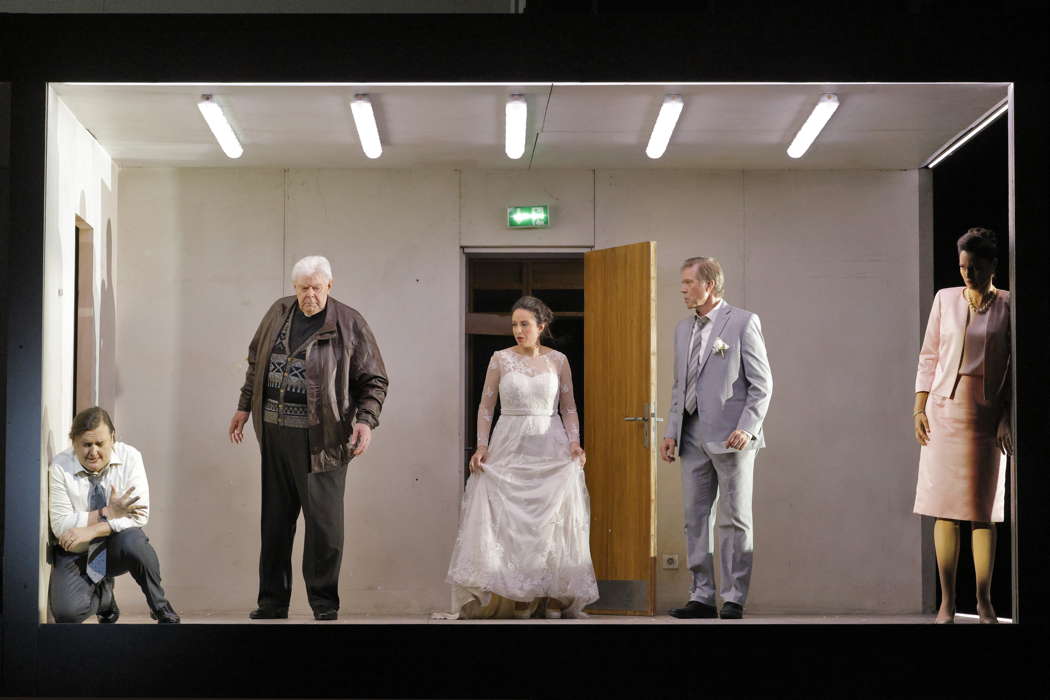
From left to right: Miles Mykkanen as the Bridegroom (Tuomas), Kristinn Sigmundsson as the Priest, Lilian Farahani as the Bride (Stela), Rod Gilfry as the Father-in-Law (Henrik) and Claire de Sévigné as the Mother-in-Law (Patricia) in Innocence by Kaija Saariaho, Sofi Oksanen and Aleksi Barrière at San Francisco Opera. Photo © 2024 Cory Weaver
In the penultimate scene, there is an ensemble with the priest, Tuomas, and Stela, the bride. The priest exorts them to 'trust the mercy of love', but the problem is that, however shamed they are by the fallout from the shooting, Tuomas and Iris are proud of the shooter, and as Iris reveals in the previous scene, Tuomas' brother 'a eu droit à toute cette peur' (was entitled to that fear). Everybody is seeking absolution and freedom from their turmoil, but nobody is actually prepared to let go of their attachment to fear and pain: the 'mercy of love' hangs out of reach. In the final measures of the opera, the music smolders, emulating the notes with which it began, but avoids a complete resolution. Innocence is a brave attempt to represent in novel ways the many lives and afterlives of trauma. Whatever the libretto's failures, Innocence is clearly moving audiences to meditate on violence that in the US often gets sidelined with vacuous 'thoughts and prayers'.
Copyright © 6 July 2024
Jeffrey Neil,
California, USA



